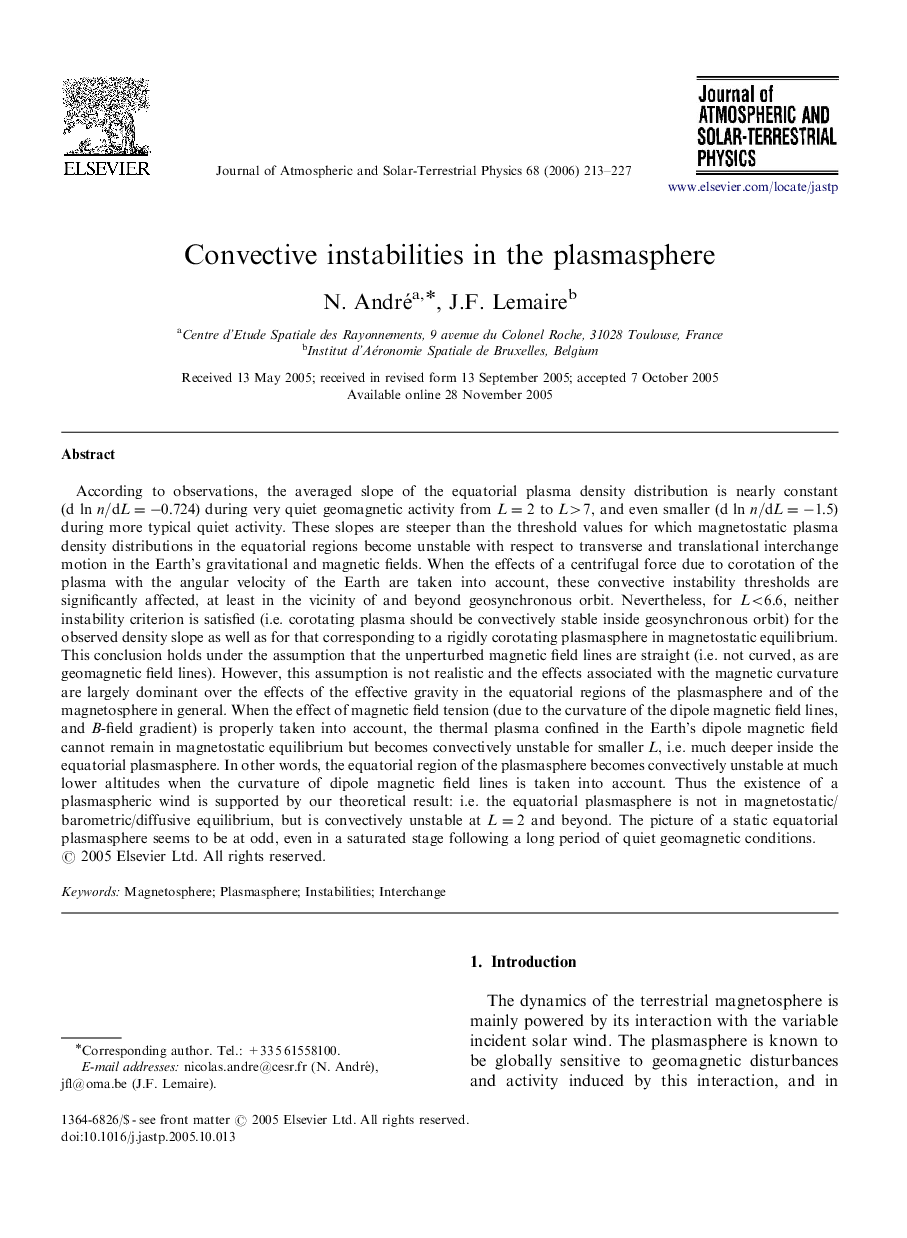| Article ID | Journal | Published Year | Pages | File Type |
|---|---|---|---|---|
| 1777811 | Journal of Atmospheric and Solar-Terrestrial Physics | 2006 | 15 Pages |
According to observations, the averaged slope of the equatorial plasma density distribution is nearly constant (dlnn/dL=-0.724) during very quiet geomagnetic activity from L=2L=2 to L>7L>7, and even smaller (dlnn/dL=-1.5) during more typical quiet activity. These slopes are steeper than the threshold values for which magnetostatic plasma density distributions in the equatorial regions become unstable with respect to transverse and translational interchange motion in the Earth's gravitational and magnetic fields. When the effects of a centrifugal force due to corotation of the plasma with the angular velocity of the Earth are taken into account, these convective instability thresholds are significantly affected, at least in the vicinity of and beyond geosynchronous orbit. Nevertheless, for L<6.6L<6.6, neither instability criterion is satisfied (i.e. corotating plasma should be convectively stable inside geosynchronous orbit) for the observed density slope as well as for that corresponding to a rigidly corotating plasmasphere in magnetostatic equilibrium. This conclusion holds under the assumption that the unperturbed magnetic field lines are straight (i.e. not curved, as are geomagnetic field lines). However, this assumption is not realistic and the effects associated with the magnetic curvature are largely dominant over the effects of the effective gravity in the equatorial regions of the plasmasphere and of the magnetosphere in general. When the effect of magnetic field tension (due to the curvature of the dipole magnetic field lines, and B-field gradient) is properly taken into account, the thermal plasma confined in the Earth's dipole magnetic field cannot remain in magnetostatic equilibrium but becomes convectively unstable for smaller L , i.e. much deeper inside the equatorial plasmasphere. In other words, the equatorial region of the plasmasphere becomes convectively unstable at much lower altitudes when the curvature of dipole magnetic field lines is taken into account. Thus the existence of a plasmaspheric wind is supported by our theoretical result: i.e. the equatorial plasmasphere is not in magnetostatic/barometric/diffusive equilibrium, but is convectively unstable at L=2L=2 and beyond. The picture of a static equatorial plasmasphere seems to be at odd, even in a saturated stage following a long period of quiet geomagnetic conditions.
